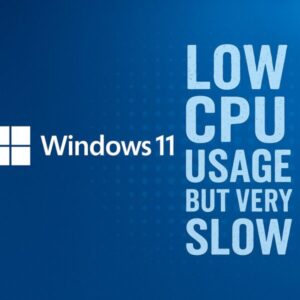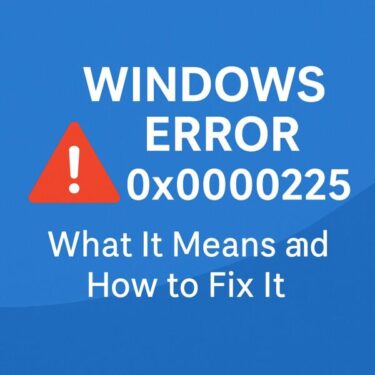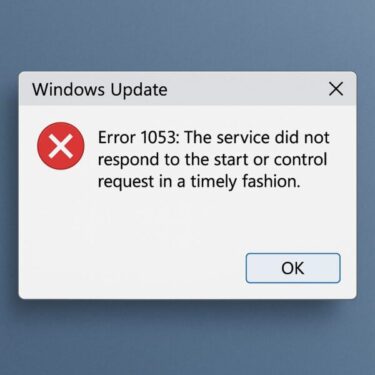
TL;DR
If your PC feels slow even when CPU is low, apps crash, or updates fail after recent Windows 11 patches: (1) run SFC/DISM to repair system files, (2) update or roll back key drivers (storage, chipset, GPU, Bluetooth/Wi‑Fi), (3) trim startup apps and pause heavy sync, (4) check Windows Defender scan activity, and (5) review BIOS/XMP/firmware. Specific KBs and known issues since June 2025 are summarized below with precise fixes.
What changed since June 2025?
Windows 11 version 24H2 became broadly available in mid‑2025 and has continued to receive monthly security updates and occasional out‑of‑band fixes. If you installed updates between June → November 2025, you may have one of these builds:
- June 2025 Patch Tuesday (24H2 KB5060842; 23H2 KB5060999)
- Windows 10 22H2 (reference: KB5060533) for mixed‑fleet environments
- October 14, 2025 update (notable: KB5066835)
- Out‑of‑Band fix late October (KB5070773) to repair WinRE input issues introduced by the October update
- November 2025 Patch Tuesday (for 23H2 track: KB5068865)
Why this matters: Some combinations of drivers + firmware + new kernel protections have produced symptoms like UI lag with low CPU, DPC latency spikes (audio pops, mouse stutter), or update install failures. The steps below target those root causes.
Symptoms you might see
| Issue | Typical signs |
|---|---|
| App crashes | 0xc0000005 (Access Violation) when launching apps |
| Update failures | 0x800f0922 / 0x800f081f / repeated rollback |
| BSODs | SYSTEM_SERVICE_EXCEPTION, MEMORY_MANAGEMENT, storage‑related stop codes |
| Sluggish but low CPU | Mouse/input lag, windows open slowly, Explorer hangs |
| Audio dropouts / stutter | High DPC latency after update, worse with Wi‑Fi/BT enabled |
Heads‑up: “Low CPU but slow system” often points to storage I/O delays, misbehaving drivers (GPU, storage, network), or heavy background scanning/sync—not pure CPU saturation.
Quick fixes (most users)
1) Repair core system files
Run these in Windows Terminal (Admin):
sfc /scannow
DISM /Online /Cleanup-Image /RestoreHealth
If SFC finds corruption, run it twice (reboot between runs) and then DISM.
2) Update or roll back drivers
Update first: Chipset (Intel/AMD), storage (NVMe/AHCI), GPU (NVIDIA/AMD/Intel), USB/BT, LAN/Wi‑Fi.
Roll back if the problem started right after a new driver—especially GPU or storage.
Tip: For OEM laptops/desktops, prefer the manufacturer’s driver package over generic ones when stability matters.
3) Trim startup apps & background sync
- Ctrl + Shift + Esc → Task Manager → Startup: Disable non‑essential items.
- Pause cloud sync (OneDrive/Dropbox/Google Drive) during heavy work.
- Re‑check after big updates—Windows can re‑enable items you had disabled.
4) Check Windows Security activity
- Open Windows Security → Virus & threat protection → Protection history.
- If full scans just ran post‑update, schedule scans off‑hours instead of disabling protection.
5) BIOS/firmware sanity check
- Temporarily disable XMP/overclocking; return to defaults to test.
- Apply the latest BIOS/firmware from your vendor.
- Ensure virtualization features align with your needs; test with Hyper‑V/Memory Integrity off if you do not use them.
If updates won’t install (or performance tanked after a specific KB)
Plan A — Install the KB manually
- Visit the Microsoft Update Catalog.
- Search the KB (e.g., KB5060842, KB5060999, KB5068865).
- Download the file that matches your edition/architecture and double‑click to install.
Manual install avoids some background conflicts that block Windows Update.
Plan B — Uninstall the problem KB
- Settings → Windows Update → Update history → Uninstall updates.
- Remove the last installed cumulative update or driver that coincides with the issue.
- Reboot, verify stability, then pause updates for ~7 days and try again later.
For October 2025 recovery keyboard/mouse issues in WinRE, ensure the out‑of‑band fix (KB5070773) is installed.
Advanced diagnostics (power users & IT)
A) Check for storage and driver timeouts
- Event Viewer → Windows Logs → System
- Event ID 129 (Storport) or 153 (Disk) = I/O timeouts.
- Update NVMe/AHCI and storage controller drivers; review SSD firmware.
B) Measure DPC latency
- Use LatencyMon. If you see high DPC from network (ndis/sys), GPU, or storage drivers:
- Update/roll back the implicated driver.
- Test with Wi‑Fi off or a different GPU driver branch (e.g., Studio vs Game Ready).
C) Verify memory stability
- Run Windows Memory Diagnostic (Restart now). Any errors → test sticks individually; replace faulty RAM.
D) Virtual memory (paging file)
- System Properties → Advanced → Performance → Advanced → Virtual memory
- Let Windows manage it or set a stable custom size (1.5–2× RAM). Reboot after changes.
Known‑issue highlights (mid‑2025 → late‑2025)
- June 2025 Patch Tuesday established the 24H2 servicing baseline (KB5060842) and 23H2 line (KB5060999).
- October 14, 2025 (KB5066835) introduced a WinRE input regression for some 24H2/25H2 devices; Microsoft released KB5070773 out‑of‑band to fix it.
- Ongoing performance work: Microsoft has been tuning Windows 11 performance and tightening driver certification; newer builds and drivers may reduce the “low‑CPU but slow” cases over time.
Practical takeaway: Keep cumulative updates, chipset/storage/GPU drivers, and BIOS current—but don’t hesitate to roll back a brand‑new driver if it clearly regresses your device.
Step‑by‑step checklist (print‑ready)
- ✅
sfc /scannow→ reboot →DISM /Online /Cleanup-Image /RestoreHealth - ✅ Update chipset, storage, GPU, Wi‑Fi/BT/LAN drivers (or roll back last change).
- ✅ Disable non‑essential Startup apps; pause heavy cloud sync.
- ✅ Review Windows Security scan timing.
- ✅ Apply latest BIOS/firmware; temporarily disable XMP/OC to test.
- ✅ If stuck, manual‑install the target KB from Update Catalog.
- ✅ If the issue maps to a specific KB, uninstall it and retry later.
- ✅ Check Event Viewer (129/153) and LatencyMon for noisy drivers.
FAQ
Q. My CPU is 5–20% but the system crawls. What should I check first?
A. Storage driver/firmware, recent GPU driver changes, Defender scans, and sync clients. Use Event Viewer (129/153) and LatencyMon.
Q. Is it safe to disable Windows Defender?
A. Don’t. Instead, schedule scans when you’re idle and exclude large project folders temporarily if needed.
Q. Should I enable Memory Integrity/Core Isolation?
A. Yes for security, but on older hardware it may add overhead. Test both ways if you see unexplained stutter.
Q. Clean install vs. in‑place repair?
A. If corruption persists, try an in‑place repair install (keep files/apps). Reserve clean install as a last resort.
Related guides
- Fix random ntoskrnl.exe BSODs (Beginner‑friendly)
- Why a clean install can be the best fix
- Speed up opening large files on Windows
✔️You might also find these helpful:
▶︎[Full Guide] How to Fix ntoskrnl.exe BSOD Random Crashes
▶︎Why a Clean Install Might Be the Best Fix for Your PC
▶︎[With Pro Tips] 7 Ways to Speed Up Opening Large Files on Windows


